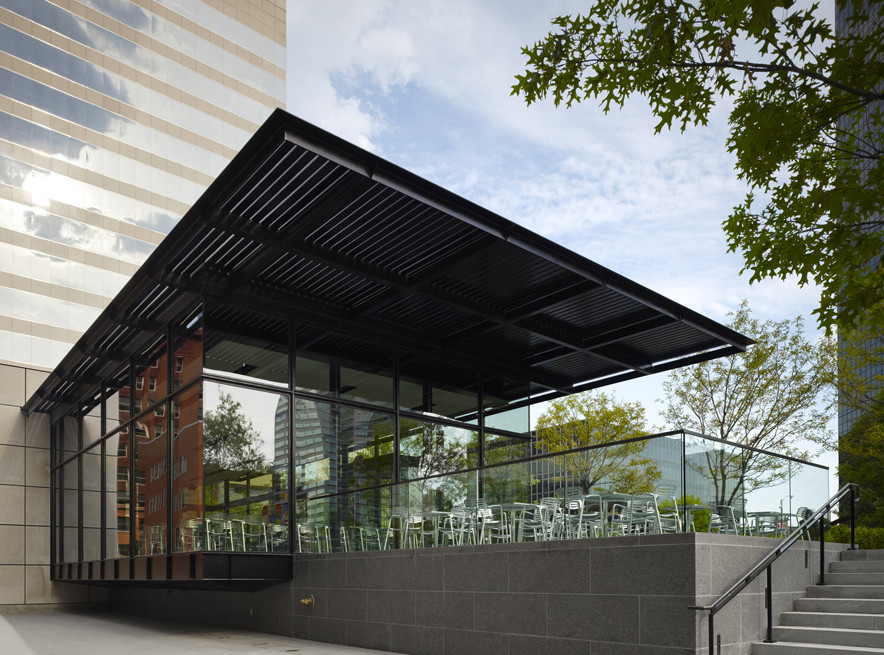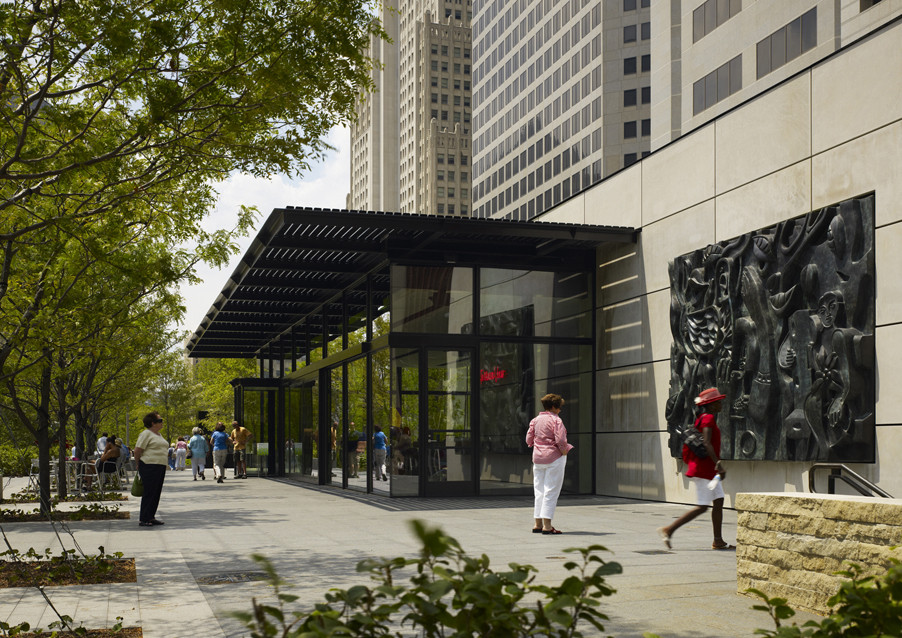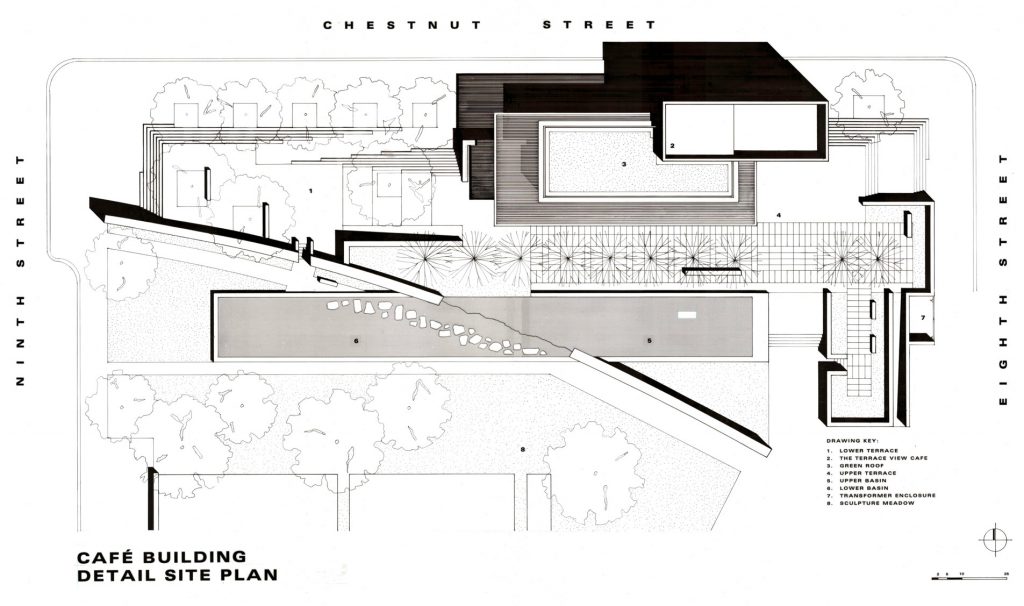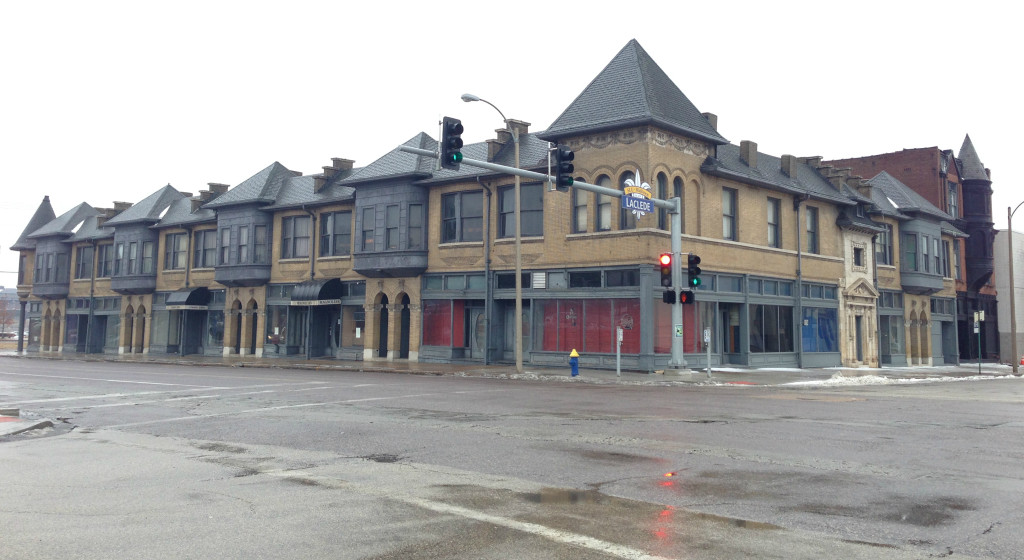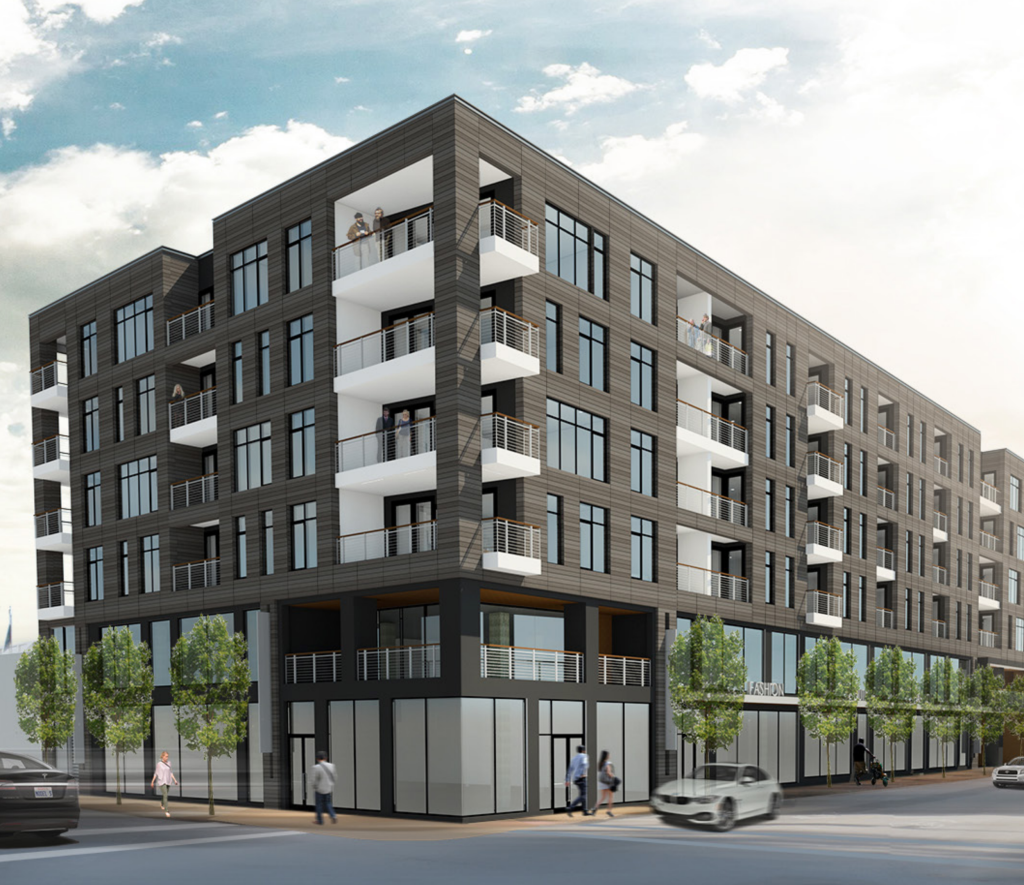If you’ve had a taste of pho, tagine or doner kebab in the Midwest, you can thank an immigrant. American food culture has long been enriched and broadened in delicious ways by immigrants who have made this country their home. In this series, A Taste of Home, you’ll meet the chefs and entrepreneurs who are bringing a taste of their cultures and backgrounds to our communities – and making them all the better for it.
If you visit Café Natasha this week, you’ll see more than a few beautiful bouquets of flowers proudly displayed in the center of the South Grand restaurant. One vase is brimming with delicate white lilies, a flower that’s long represented friendship, devotion and sympathy.
On Dec. 13, Behshid Bahrami, the co-founder of Café Natasha and beloved husband of Hamishe Bahrami and father of Natasha Bahrami, passed away. Together, Hamishe and Behshid had owned and operated restaurants in St. Louis for 34 years, and his loss was hugely felt in the community.
“After my husband passed away, so many people came in and they all had different stories to tell about him,” Hamishe says. “That was very amazing and overwhelming for me. It was really moving. I wish… if there is such a thing as a soul, that his was here to see how much people cared for him. He worked really hard for this and he deserved that.”
St. Louis Public Radio’s Durrie Bouscaren featured Hamishe in a segment last week about the recent temporary immigration ban. When one of Hamishe’s childhood friends in Iran learned of Behshid’s passing, she made plans to visit the family in St. Louis. Early in the morning on Jan. 30, Hamishe learned that her friend, whom she hadn’t seen in 46 years, was denied entry into the U.S. Since the story aired, Hamishe says people from across the metro area have reached out to show their support for the Bahramis and Café Natasha.
+4
Natasha Bahrami, standing, with her mother, Hamishe Bahrami, whose delicious, light, flavorful cooking has delighted Cafe Natasha fans for 30 years.
Pat Eby
“I cried so many times – people I didn’t even know brought flowers, cards; they cried with me, they hugged me,” Hamishe says, gesturing toward the vase of lilies. “A lady walked in, I didn’t even know who she was, she hugged me and cried with me, and she said ‘I heard [your story] on the radio on my way home from work.’ She said she cried listening to it; she couldn’t believe [that happened.] She went and bought flowers and came in and said she’d be back, that she loves our food here.”
The Bahramis opened their first restaurant, The Little Kitchen, in the Paul Brown Building in Downtown St. Louis in 1983. They entered the restaurant industry more out of necessity than anything – Behshid, a geologist, was laid off from his position with Shannon & Wilson Inc. Hamishe says he offered to do the same work for half of the salary, as she was nine months pregnant with their daughter, Natasha, and following the Iranian hostage crisis, he knew it would be difficult to find other employment.
“He looked for a job for a year and a half,” Hamishe says. “I had to go back to work a week after I had Natasha because we needed the money – unemployment doesn’t give you much, and we had bills to pay. We couldn’t live like that and I didn’t want to be on welfare, so we decided to open our own business. He loved to cook; that’s why we got into restaurants.”
The Little Kitchen got off to a slow start, as St. Louisans weren’t familiar with the authentic Persian fare that the Bahramis served. They quickly changed the menu to mostly reflect more familiar American lunchtime fare, including turkey and roast beef sandwiches and fresh tuna and chicken salad, all made from scratch. The restaurant proved a success, serving the business lunch crowd in Downtown St. Louis for 12 years. By that time the Bahramis were operating a second restaurant, Café Natasha, which opened in the Delmar Loop in 1993. Eventually the family closed the Delmar location to concentrate on the current incarnation at 3200 South Grand Boulevard.
In the early days, Behshid was the chef and Hamishe managed the front of house, welcoming in diners with her outgoing and warm personality. Over the years she took on a larger role in the kitchen, collaborating with Behshid on menu items that blended flavors and dishes popular in their respective hometowns. Although Behshid retired about two years ago, Hamishe and Natasha say he still wanted to taste dishes at the restaurant to ensure the food was up to his standards.
“And if it wasn’t right, he would say so,” Hamishe says with a warm smile. “It was good – we didn’t like it, but it was good. He cared… he really cared about the food, what he gave people. Now Natasha is the same way. She’ll come in and try something and say the food is not the same. Now she’s my taster.”
What first brought you to St. Louis? To marry [Natasha’s father]. I originally came to the U.S. in 1976 to study English. I was a nurse in my country and I wanted to come visit America; I had a friend over here, and I liked it. I decided to go to school in New York to learn English. Life was just so different there. I was always a different kind of person even when I was in my country. I was thinking differently; I was open-minded to other cultures. I always wanted to fly away. And I loved American culture – the cowboy style of life. I thought that if I came to America, that I would be part of that life. I would go ride a horse – when you’re young, stuff goes to your head. When I came here, my friend lived in New Jersey, and I stayed with her for a while and then got my own place. Just getting on the bus to school… People would say good morning to you and it was like everybody respected everyone. It was completely different; a society unlike anything I’d ever seen. At night, everybody, after they finished school or work, would go to little taverns, eat, listen to music and dance, and have a drink. People living their lives the way they wanted to… nobody would say “oh, you’re a woman, why are you outside at night, and drinking?” You couldn’t do that in my country. It was freedom to live how you wanted to live and nobody would judge you. That attracted me so much – I could be myself.
What was the process of coming to this country like for you? Back then it was easy. [Behshid] came to the U.S. in 1972 to get his master’s degree – he got his undergrad in Iran – and a master’s in New York. He drove a cab while he was in school to support himself. Then after graduation he got a job; he worked in California for a while, and the company sent him to Iran, and then when [the Iranian hostage crisis began], he came back with his company to St. Louis. This was all before we met.
After the Iranian Revolution in 1979, I couldn’t go back to my country; most of my family were involved in politics and I couldn’t go back. Right now [what’s happening in America] was not as bad as that time. It was my second year of college, and the dean of the school knew me. He told me he didn’t trust people here and that if they found me, they might hurt me. I got help from a lawyer to get a visa to stay in this country and get a green card. He also gave me a job, so I was working in the morning and going to school at night. And then I met my husband through his brother-in-law; his brother-in-law was a classmate of my roommate. She was talking about me all the time, and he was looking for an Iranian girl to marry. After three months we got married and I moved to St. Louis, which is where he was living for work.
What does it mean to you to live here? We’ve been [operating restaurants in St. Louis] for 34 years. We have customers who have been coming to our restaurants since they were kids, who now bring in their kids. I had this young man one day, he had a reservation, and he came in we were so busy. He got up, came and grabbed me and gave me the biggest hug ever. I looked at him and said, “Do I know you?” And he said, “Yeah, when I was a little boy you would hold me all the time because my parents would dine at your place.” And then I went to his table, and I remembered – I knew his father first, because he would bring a date, and then they fell in love and got married and had their first baby. They would all three come in and I would hold the baby while the parents were eating so they could enjoy their dinner. And I love babies. So a story like that… I have so many of them. Lots of beautiful stories that have kept me going. If it wasn’t for stories like that I wouldn’t have lasted this long, to know that people appreciate us being here. This is like home for them, it’s not just another restaurant. If we acted like just another restaurant, we wouldn’t be here.
Tell us about the food you serve at your restaurant. Today [the South Grand location] serves Persian and some Middle Eastern food, but I put my own flavor into it, so it’s a bit different than what you’d get at other places. I love the lamb stew and the chicken with the walnut-pomegranate sauce, those are both Persian dishes. The all-beef shish kebab is not Persian, but the marinade and seasoning, my husband and I made it together. The sauce and seasoning is different from what you’ll find in other restaurants. Some of the dishes his mother made… we all know how to cook; Persian people, everyone knows how to cook. You cook all the time; we love food. And then we have several regions… It’s the same in America, where you have Texas barbecue or St. Louis barbecue, people make different food. We do the same thing. I’m from the north, and our food is completely different – different seasoning – and he was from Tehran, and their food is different. We would make food, taste the flavors and combine them.
What are some of your favorite dishes to make? When we were downtown, on Fridays, we made soup, called osh; it’s thick soup. We only served it on Fridays. We had beef or chicken broth in it and so vegetarians couldn’t eat it. So we started making it with butter and spices instead. And then vegan people asked why there was butter in it, so now I just make it seasoned with only spices, no flavor from butter or stock. It’s as good, if not better, because you know you’re eating healthy food. It’s thick, made with lentils and barley, and smells good and tastes good. Great for wintertime, but I love eating it all year round.
What have been some meaningful moments and experiences you’ve shared with diners and people in the community? When 9/11 happened, it affected us. We had no customers for about a month; nobody would come in. Then a customer did come in and asked us why no one was in the restaurant. We said, “Well, since 9/11, we haven’t had many customers.” She texted all her friends and called people and said, “We need to support Café Natasha,” and [many people] came in within two weeks. We didn’t know she did it, and all of the sudden the place was packed with people and all the people seemed to know each other.
After NPR talked to me [last week], people just… they’re so amazing. St. Louisians are amazing people. They came in, they’re crying and hugging me, and saying they’re sorry. They act like they are the ones in charge of stopping it; they were so supportive. The same way with 9/11; people were so supportive.
When my husband passed away, we don’t have any [family] here, and it was amazing how many people came in. There was ice outside and the weather was horrible, but this place was packed with people. I really didn’t miss my family because so many people came in and supported us. They didn’t have to do that, but they did, to make me feel that I’m home. That I’m not just another so-called immigrant, you know?
Have you experienced challenges along the way? When we opened downtown, people would come in and ask us where we were from, and I would say Persia. One lady came in and asked “Persian… why don’t you say Iranian? Tell us who you are.” And I told her that I was Persian; I told her that I’m not the one who took the hostages [in Iran]; we’re just here trying to survive – that’s why we’re here and not there, because of that. We want to survive in America – I want to work hard and make a living and make my baby happy and give her a life. I’m not hiding myself. I am who I am, and I’m not the one who [is responsible for conflict in Iran]. This is politics; it’s not us. After a while people got to know us and they were very supportive.
This is a country made of immigrants. Everybody was an immigrant. Maybe you came in before us or after. When they look at us as immigrants… they would never look at us as Americans, because they think that because they were born here, that they are American and we are not. But we are American, too. I am just as supportive of America as anybody else. I’m a very good citizen; I work hard to make a living and be an example for other people who come to this country. I think I’m a better citizen than some of the people born here. When people do something wrong – break the law – I get so mad. If you’re in this country, whoever, you need to follow the rule of law. To me, rule of law is very important. We’re here, and we try so hard to give people good, delicious food.
What do you love most about living in St. Louis? I’ve lived here since 1982, 35 years. I love St. Louis. If I could choose to live anywhere in the world I would still choose to live in St. Louis. This is my home. It’s a great city with great people. I am honestly so overwhelmed with support from our neighbors. What I love most about St. Louis is the people. People are very open-minded, intelligent, very supportive, very loving and caring; it’s like a family. Everybody has a great heart, and that’s what’s kept me in St. Louis. If it wasn’t for the people, I wouldn’t be in business. I’m so proud to be a St. Louisian and to be a part of St. Louis. I want people to know that their loving us, and taking us in as a family, is very important to us. That’s why we’re trying so hard to continue staying here [at Café Natasha], to give them the joy of eating the food.










